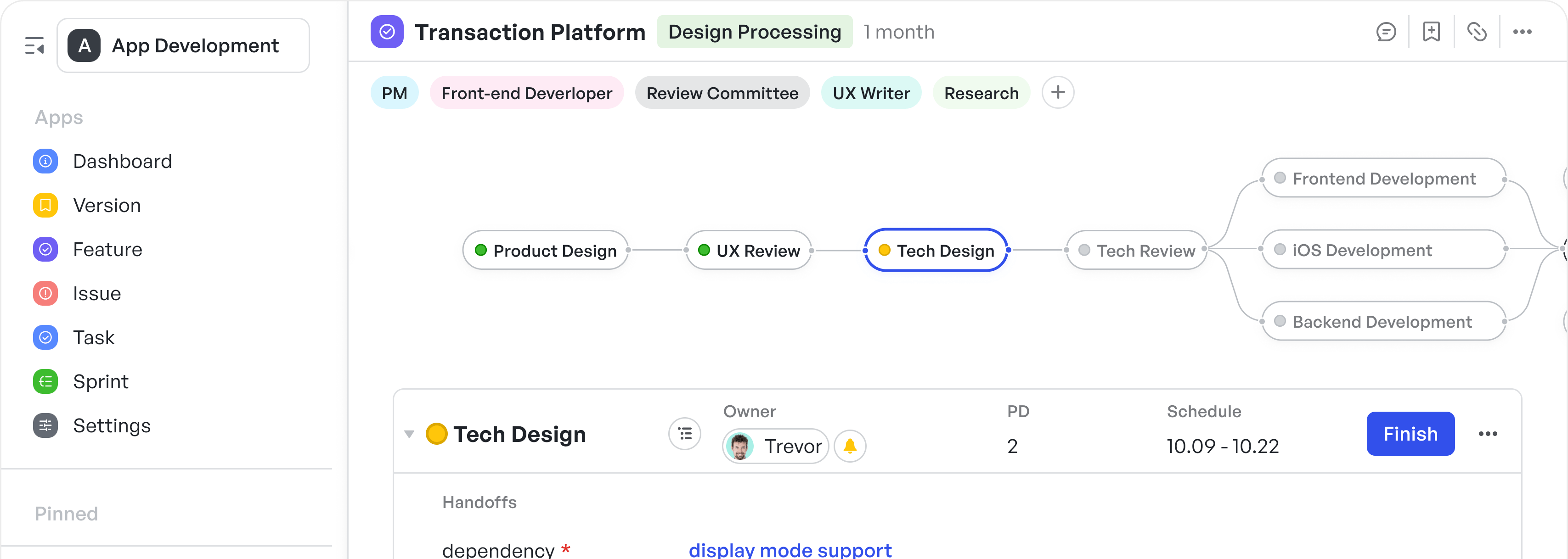Navigating change in project management involves careful planning, communication, and execution. But how exactly can you embed the change management process into the very fabric of your project's lifecycle? Let's unravel this methodology, illustrate it with tangible examples, and demonstrate how Meegle can be your pilot through these winds of change.
A Step-by-Step Guide to Change Management in Project Management
1. Anticipate Change
Begin with the understanding that change is inevitable. Proactively identify areas where change is most likely and plan accordingly.
2. Include Change Management in the Project Plan
Develop a change management strategy as a part of your overall project plan, outlining how change requests will be assessed and implemented.
3. Create a Change Control Process
Establish a clear process for managing change requests, including submission, review, approval, and implementation steps.
4. Maintain a Change Log
Keep a record of all changes requested and made, including the rationale and impact on the project’s scope, budget, and timeline.
5. Communicate Effectively
Ensure that all changes and their impacts are communicated to the relevant stakeholders in a clear and timely manner.
6. Designate a Change Control Board
Form a committee responsible for reviewing and deciding on change requests, ensuring decisions are consistent and aligned with project objectives.
7. Assess Impact
Evaluate the implications of each change on project deliverables, timeline, costs, and team performance.
8. Train and Support the Team
Provide necessary training and support to help team members adapt to changes, ensuring they have the skills to handle new tasks or processes.
9. Update Project Documentation
Make modifications to project documents and plans to reflect approved changes, maintaining accuracy and relevance.
10. Confirm Changes with Stakeholders
Get sign-off on change implementation from stakeholders, confirming that the change aligns with the project’s objectives and benefits.
11. Monitor and Review Changes
Regularly review the outcomes of changes, comparing results against expected benefits to ensure they are delivering value.
12. Celebrate Success and Learn from Experience
Acknowledge and reward positive outcomes stemming from changes, and analyze failed changes to glean insights for future projects.
Popular Change Management Frameworks
- Lewin’s Change Management Model: Lewin’s three-step model (Unfreeze, Change, Refreeze) provides a high-level approach to ensure that changes are thoroughly understood and accepted before they are solidified into organizational practice.
- The PDCA Cycle (Plan-Do-Check-Act): This iterative four-phase approach is useful for continuous improvement, enabling project managers to test changes on a smaller scale before full implementation.
Together, these approaches and frameworks offer a multi-faceted toolkit for project managers to handle change effectively, helping ensure that project goals are met despite the dynamic nature of organizational environments.
Meegle Solutions for Change Management
Besides theoretical knowledge, having a robust change management process facilitated by tools like Meegle can also help. Meegle can streamline communication, track tasks and changes, and support collaboration and feedback, ultimately making the change management process more transparent and manageable.
Let's dive into a few more examples illustrating different facets of change management in various project scenarios. These examples will also give a glimpse into how Meegle can be utilized to manage these changes effectively.
Example 1: Software Development Project
Imagine your team is developing a mobile app, and halfway through, you realize user feedback indicates the need for additional features that weren’t originally planned.
Using Meegle:
- Change Request Submission: The project manager can use Meegle to submit a change request detailing the proposed features, reasons for the change, and potential impacts on the project timeline and budget.
250px|700px|reset
加载中,请稍后
- Workflow Management: Set up a specific workflow for change approval that routes the request to the appropriate decision-makers for review.
250px|700px|reset
加载中,请稍后
- Task Reassignment: Once approved, task assignments are updated in Meegle to reflect the new development priorities, and all relevant team members are notified of their new responsibilities.
250px|700px|reset
加载中,请稍后
- Documentation Consolidation: Meegle serves as the central repository where all updated project documentation reflecting the change is stored and easily accessible to the team.
Example 2: Construction Project Schedule Change
A construction project encounters unexpected geological issues, requiring a redesign of the foundation that affects the project schedule.
Using Meegle:
- Risk Management Documentation: Record the geological findings as a risk in Meegle, and document all associated change requests for redesign and schedule adjustments.
250px|700px|reset
加载中,请稍后
- Update Schedules and Deadlines: Adjust the project timeline directly in Meegle to account for the change in construction plans and communicate new deadlines to all stakeholders.
- Resource Scheduling: Manage the shift in manpower and equipment scheduling through Meegle, ensuring that the necessary resources are available when the revised construction phase begins.
250px|700px|reset
加载中,请稍后
- Change History Tracking: Maintain a log of all changes within Meegle to provide a clear audit trail for future reference and to help manage stakeholder expectations.
250px|700px|reset
加载中,请稍后
Example 3: Manufacturing Process Improvement
A company decides to implement a new technology that improves the efficiency of its manufacturing process but requires changes to its workflow and employee training.
Using Meegle:
- Task Monitoring: Monitor the implementation of the new manufacturing processes through Meegle’s dashboard, keeping track of which procedures have been updated and which are pending.
250px|700px|reset
加载中,请稍后
- Feedback Collection: Create a feedback loop within Meegle where employees can share their experiences with the new technology, allowing for continuous improvement and adherence to best practices.
Each of these examples demonstrates change management in action – identifying the need for change, planning the approach, using Meegle to organize, communicate and implement changes, then monitoring and adjusting courses as necessary. Meegle serves as a versatile tool that keeps these complex processes transparent and on track.





